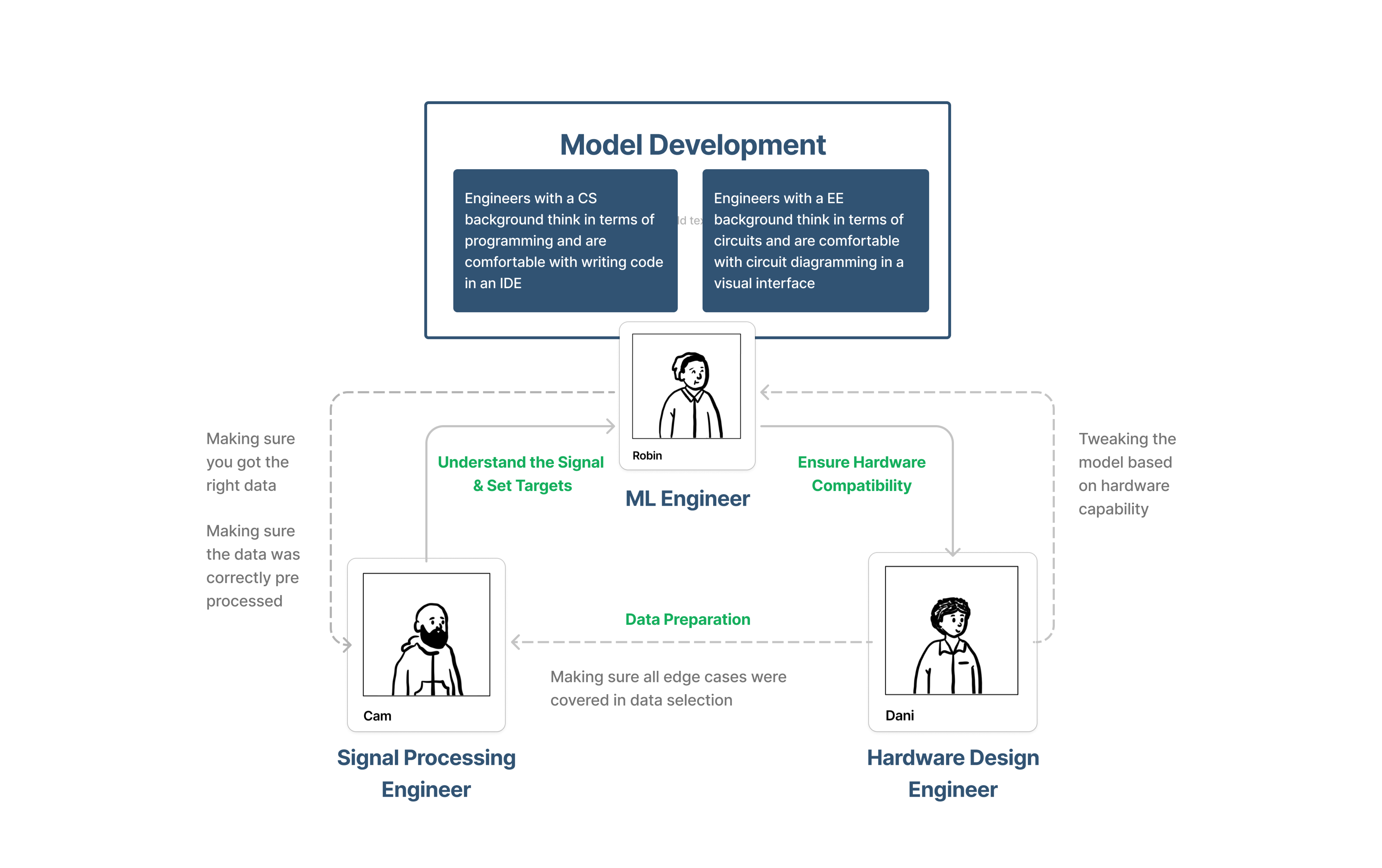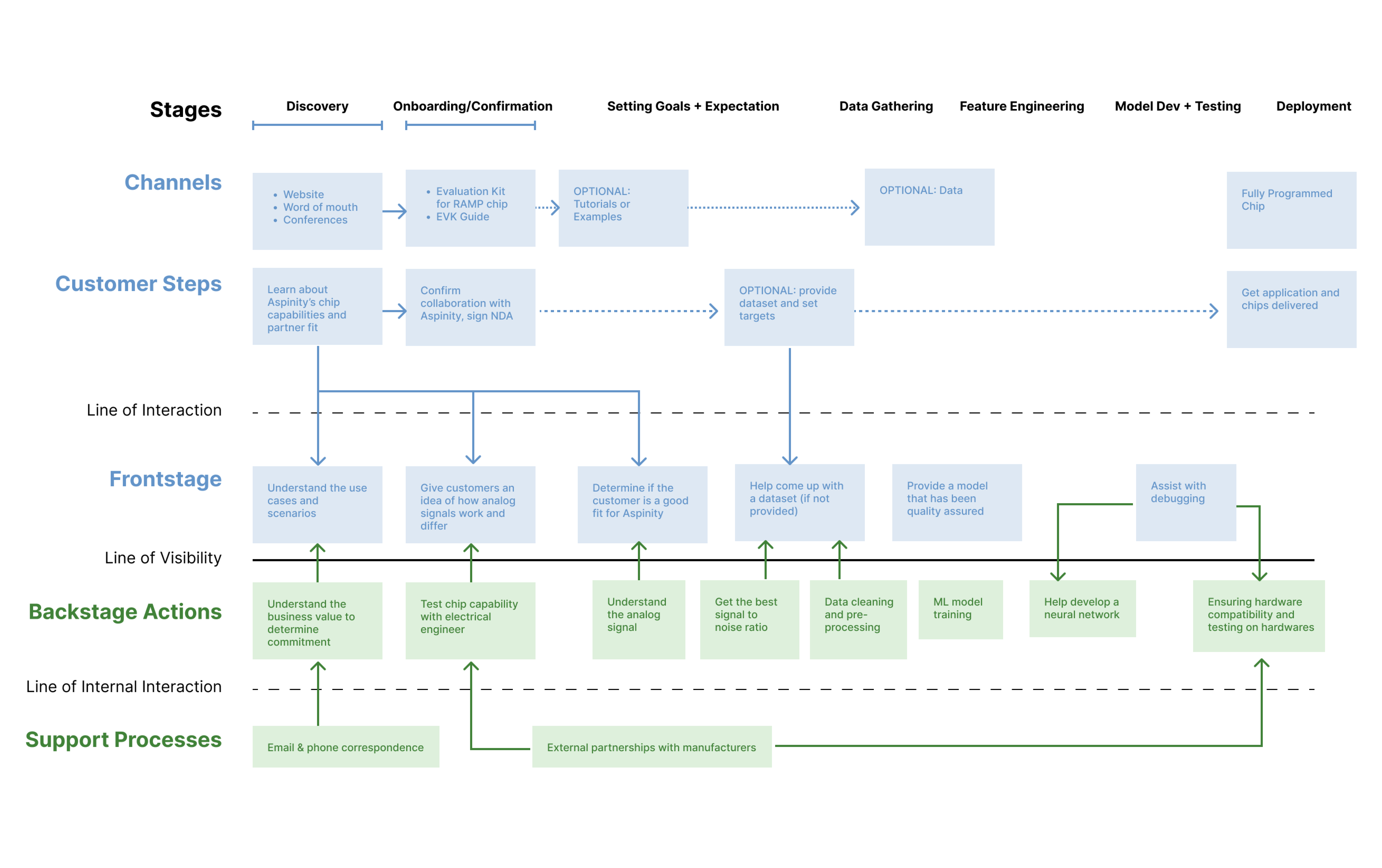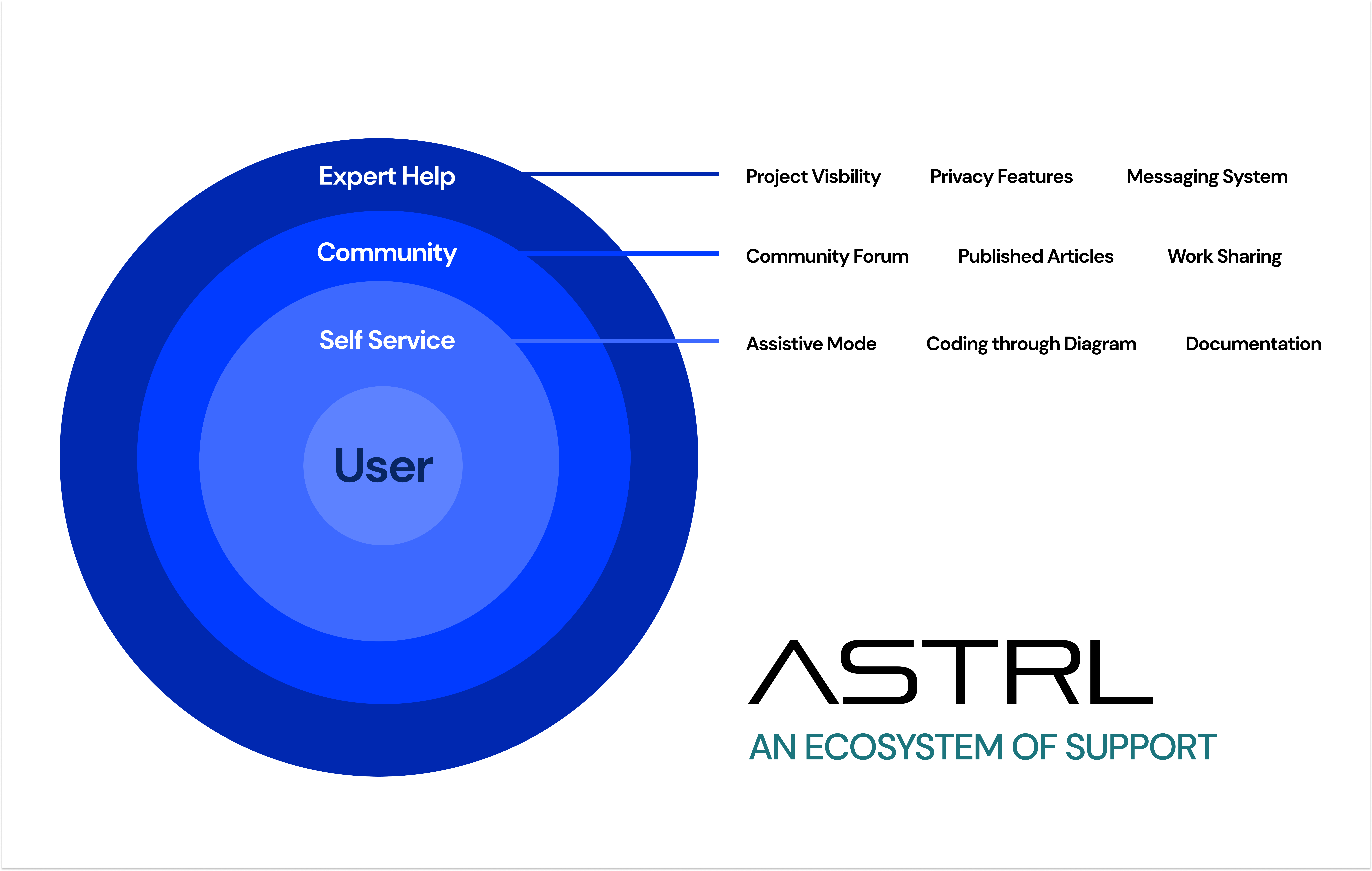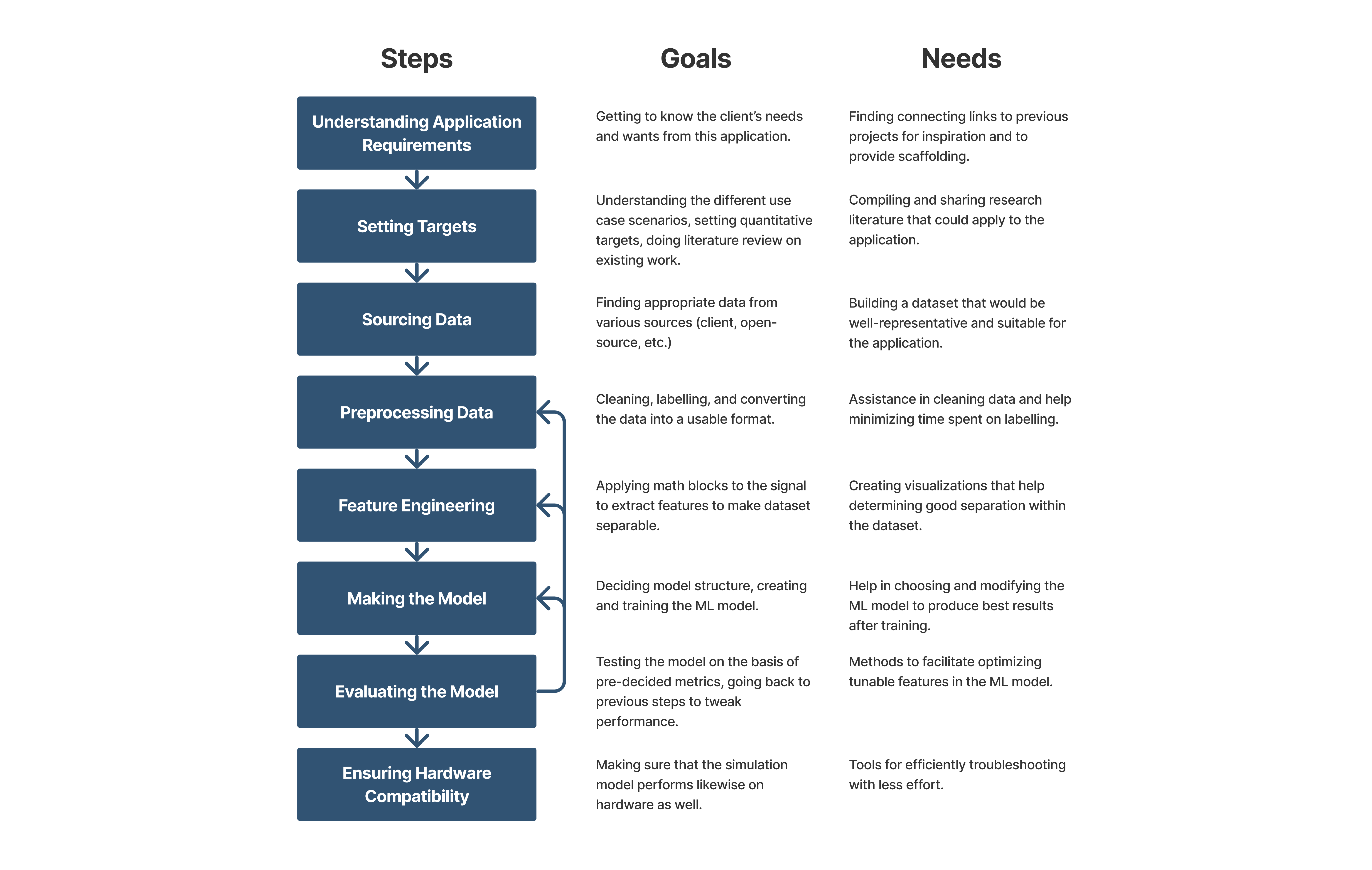AnalogML is a new niche within the domain of ML. Currently, clients sit down with experts from Aspinity to learn the intricacies of the technology to develop a fundamental grasp of AnalogML. To empower clients to create their own AnalogML applications, client engineers need to understand the high-level relationships and requirements of working with analog data and hardware.

The end-to-end application development process involves multiple roles and expertise across the team. No individual knows how to do it all - yet everyone needs to be aware of each step of the process because different steps require specific skill sets with handoffs to one another. Effective team communication collaboration between diverse individuals needs to be aided.

Currently, there are many frictions and inefficiencies in how Aspinity engineers develop an application because tasks require lots of manual labor. Several steps requires the engineer to restart processes every time they make a change. Sometimes lack of context requires them to do research and experimentation. There is an opportunity for automation or smart recommendations that would ultimately save time.

Niche Domain Knowledge with Steep Learning Curve
Cross-Functional Teamwork Lacks Effective Collaboration
Manual Tasks are Inefficient, Inflexible, and Inevitable





